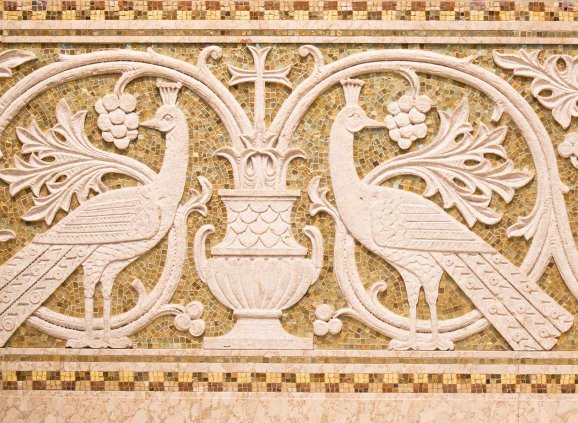
- Vested Interest
All Saints & All Souls

Some of us will be breathing a sigh of relief on November 1st: another night of emergency costume repairs, passing out candy, and shepherding trick-or-treaters successfully navigated. Some of us will be carefully sorting our candy haul in order of preference, or steadily binging our way through it (depending on our personality types or parental strictness). Some of us will probably be hung over. And some of us will be awaiting the main event: the Feast of All Saints.
We don’t typically think of November 1st as a big deal, but it is a big deal for the church. One of the seven major feasts in the Christian calendar, it’s right up there with Christmas and Easter. One way of thinking about the major feasts (Easter Day, Ascension Day, Pentecost, Trinity Sunday, All Saints’ Day, Christmas Day, and the Epiphany) is that they represent times when the boundaries between things are broken open: boundaries between heaven and earth, between humanity and God, between God-as-single and God-as-relationship, and—on All Saints’—between this world and the world to come.
In preparation for this blog post, I’ve been diving into the fascinating rabbit hole of the relationship between All Hallow’s Eve, All Saints’ Day, All Souls’ Day. Particularly for an Anglican sensibility, which tends to value diverse theologies and similar prayers and practices, it’s a real challenge. On these three holy days, we look at the connection between life and death, mortality and immortality, and we ask ourselves, “What do I really think happens when we die?”
The pre-Reformation tradition was to celebrate All Saint’s Day on November 1st to honor those departed saints and martyrs who were with God; and to take All Soul’s Day, November 2nd, as a day to pray for all who have died. The concept of purgatory—a state after death when the soul is prepared for heaven through trials—is key to understanding the distinction. On November 1st, we honor the saints and we pray for the grace to lead lives of sainthood; on November 2nd, we pray for the well-being of all those who have not yet made their way fully to God.
For those Christian denominations which don’t support the idea of purgatory, All Saint’s and All Souls’ blur together. When we affirm the Apostle’s Creed we talk about “the communion of saints,” all of those witnesses on earth, departed, and yet to be born who make up the Body of Christ. If we hope for the reconciliation of all people with God, we can think of all people as saints—in which case All Soul’s can just sort of be merged into the celebration of all of us and our relation with Christ.
And yet I think there’s something to be said for keeping All Soul’s separate, for remembering all those who have died—not, perhaps, because they need our prayers in order for God to forgive them, but because we need to take the space to remember them. We need the time to ponder two unfathomable mysteries: first, that those we love have died, and we do not see them any more; and second, that they continue in relationship with God and with us. How can these things be true? How can they possibly both be true? And yet—and yet, we know that it is so. Like the two peacocks face to face on our altar, we look into the abyss; and when we see it for what it is, we find it brimming with life.
At "Vested Interest," church nerd Mary Davenport Davis explores all things liturgy and music at Trinity and beyond. Chime in with comments and questions!


Comments